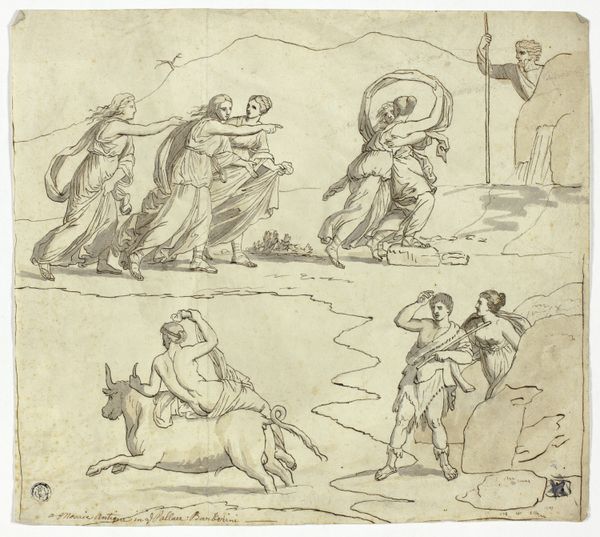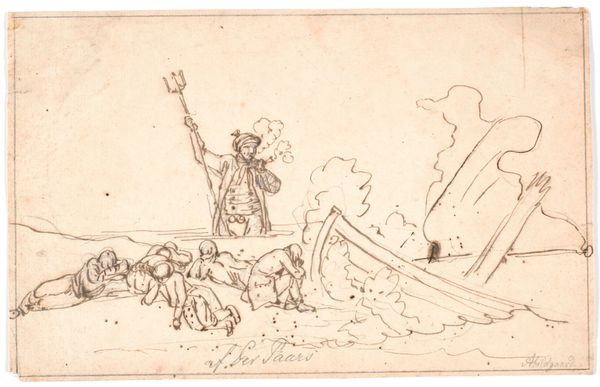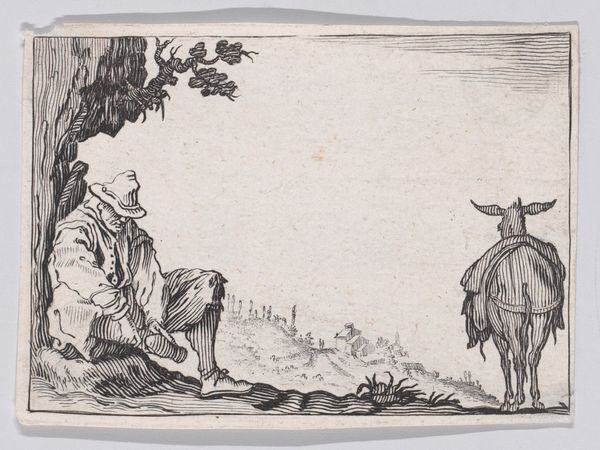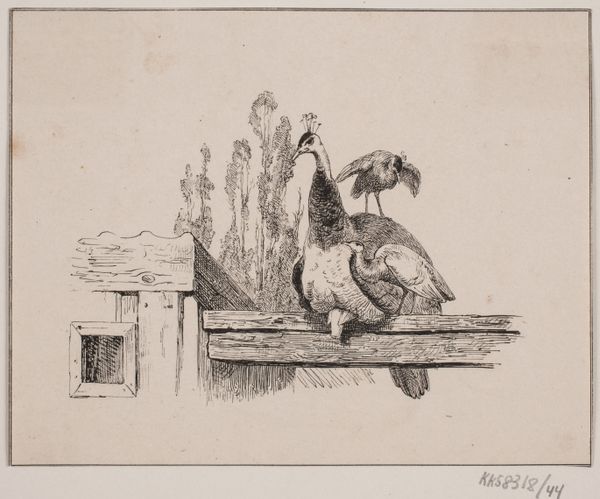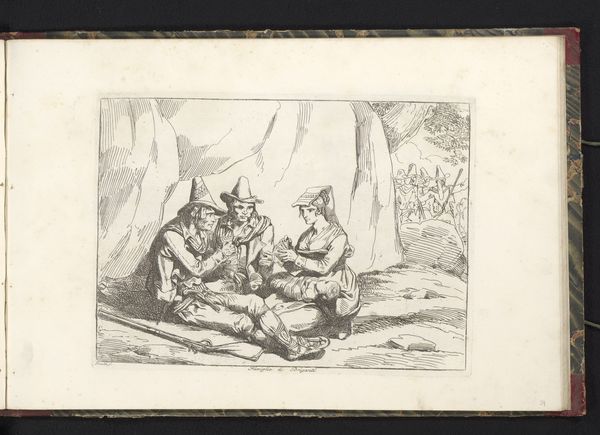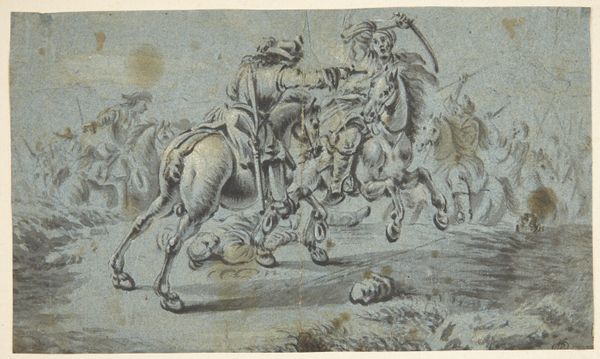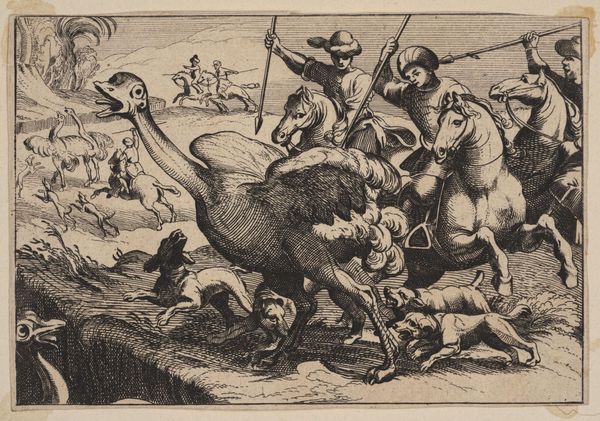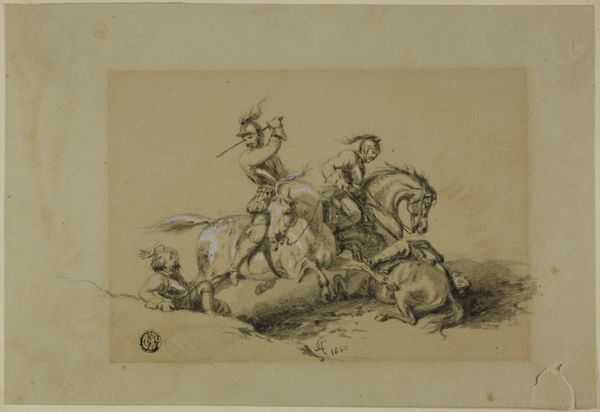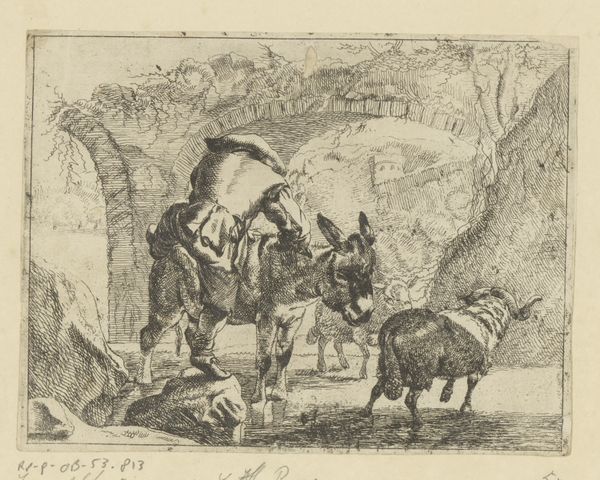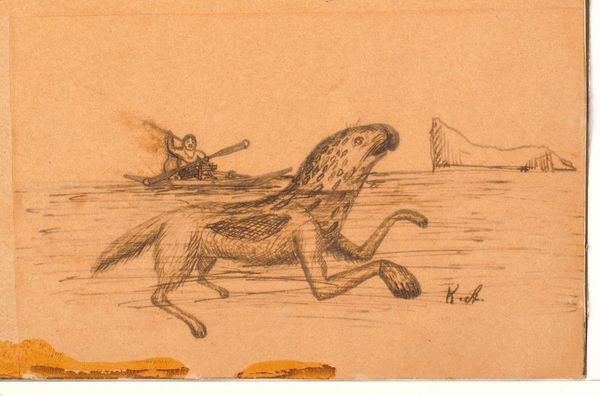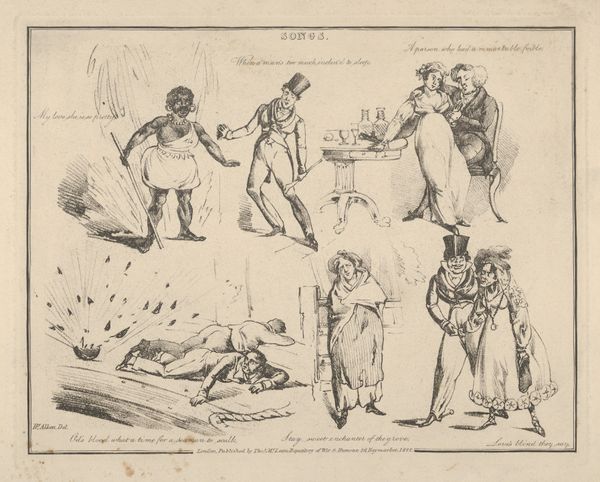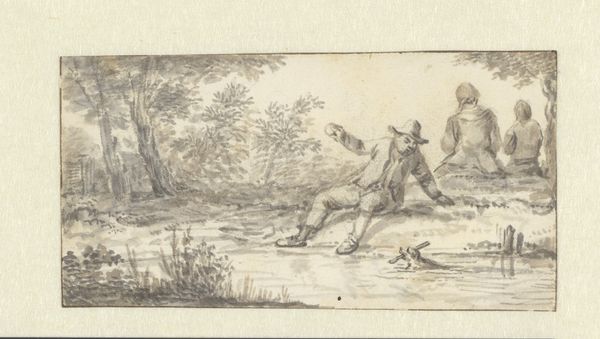
Don Quixote's adventure with the windmills (obverse) and figure studies (reverse) 1856
0:00
0:00
Dimensions: 11.6 x 15.5 cm
Copyright: Public domain
Curator: This is Mariano Fortuny Marsal’s “Don Quixote's adventure with the windmills,” made around 1856, employing ink, watercolor, and colored pencil on paper. The Museu Nacional d'Art de Catalunya holds it. Editor: My first thought is that this feels wonderfully immediate, almost a quick sketch. The fall of Quixote really dominates the scene; the earthy watercolor washes lend it this great feeling of motion, like a whirlwind captured. Curator: Indeed! The subject, of course, recalls Cervantes’ famous novel, the delusional knight tilting at windmills he mistakes for giants. Fortuny distills the narrative into this single moment of humorous defeat. There’s something enduringly comical about human delusion clashing with reality. Editor: The lines certainly have an immediacy. I'm drawn to the materiality – the paper itself, its size, what kind it is – and what appears to be Fortuny’s process. You can see he's experimenting, likely creating multiple studies on one sheet, given that reverse also has studies, according to its title. It makes you think about his working practices. Curator: Exactly. And this interplay between reality and imagination is essential to Romanticism, the movement to which it is assigned by the Museum, with an emphasis on subjectivity, emotion, and the power of the imagination—themes brilliantly explored by Cervantes and rendered beautifully by Fortuny. Editor: It seems the real story is about materials, like the type of ink, perhaps, that he would choose given its wide availability. That choice in itself says so much about his access to materials and production possibilities for artists in his circle, making this drawing a lens for viewing Fortuny and the other Romanticists that came up around his moment. Curator: Certainly. The economical lines give us a peek into how the symbolic and visual vocabulary worked at that period, showing Romanticism through one of the defining texts that captured our dreams. Editor: Right, and it's crucial we keep asking: Who made this? Why did they make it this way? Curator: These lines can spark new conversations about materiality and cultural meanings surrounding it. Editor: That sounds right, yes.
Comments
No comments
Be the first to comment and join the conversation on the ultimate creative platform.

